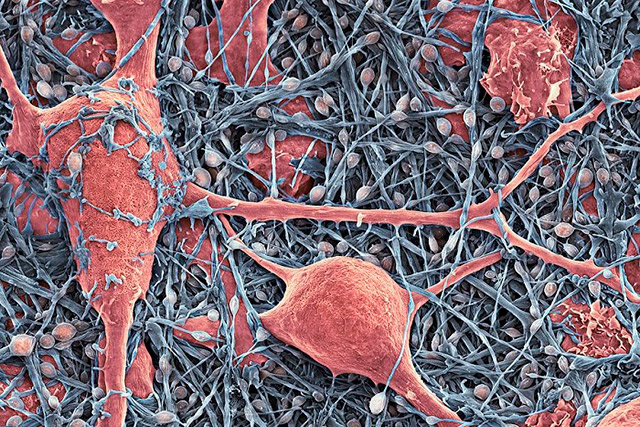Epilepsy: Causes and Symptoms
05 Dec 2016
Neurologist Dr. Doping tells about epilepsy, the development of the disease in childhood, and modern approaches to treatment of disease.

Epilepsy - is a chronic disease of the brain that is characterized by recurrent attacks of unprovoked with different clinical manifestations. During an epileptic seizure may experience a variety of disorders of motor, sensory, mental, cognitive and autonomic functions. These disorders are caused by excessive neuronal discharges in the gray matter of the cerebral cortex.
Conventionally, all forms of epilepsy can be divided into two major groups: epilepsy with hereditary genetic predisposition and acquired epilepsy. The development of a single attack is not proof of the presence of epilepsy. Available statistics indicate that about 10% of the population at least once in their lives suffered a seizure. For the diagnosis of epilepsy are key two points: the development of repeated attacks and the development of spontaneous seizures unprovoked. The exception is a reflex epilepsy. Classic examples of reflex seizures characteristic of photosensitive epilepsy, when the light stimulus can trigger an epileptic seizure.
Epilepsy and epileptic syndrome
It is necessary to distinguish between epilepsy as a disease and as a syndrome. Epilepsy - is a chronic neurological disease independent. Epilepsy - is a manifestation of various diseases accompanied by convulsive tonic-clonic seizures, loss of consciousness and other symptoms that can be triggered by external factors, such as high temperature.
Epilepsy often begins in childhood. One of the main causes of the disease - a violation of the activity of genes responsible for the work of the sodium, potassium, hydrogen and chloride channels in the nerve cell. As a result of these deviations violated the polarization of the membrane of the nerve cell, changing the activity of glial cells. As a result of neuronal cells dramatically increase their activity. Thus, epilepsy is caused by genetic changes that result in increased activity of nerve cells and surrounding cells - glial cells. But there are also other types of epilepsy, which are associated with specific genes and are monogenic inheritance. The specific gene and a specific problem associated with impaired activity of the gene, leading to the disease. But in most of these cases, epilepsy is a polygenic, that is, for its development requires a combination of changes in gene activity that leads to the phenomenon of hyperexcitability of the cerebral cortex and the development of epileptic seizures.
The development of the disease falling sickness
In 60-70% of cases, epilepsy develops in childhood. By age groups the disease is divided into several groups: epilepsy of infancy occurs in the first year of life; Childhood epilepsy develops up to 6 years; epilepsy adolescence appears between the ages of 12-14 years. The disease begins its development, depending on when the group changes the activity of certain genes. In Russia, it suffers from epilepsy 0.5-1% of the total child population. Various forms of epilepsy proceed differently. Some children form proceed with a flagrant violation of the child's development. The earlier developed epilepsy and the later it is diagnosed, the worse the prognosis for the child's development.
Each epileptic syndrome is unique, but it has its own characteristic clinical features. Based on the clinical manifestations of seizures was built one of the classifications of epilepsy. Epilepsy is associated with the problem of "paroxysmal brain." The brain in epilepsy works differently: it periodically without any provocateurs can generate the strongest level of activity, which manifested as seizures. A person may be born with predisposition, ie with a predisposition to the disease. In the future, the effect of different factors can implement this predisposition. One example, is detected when a predisposition to epilepsy - febrile convulsions, i.e. convulsions in children occurring at high temperature. The presence of such seizures does not mean that the child is bound to be epilepsy. But found that some children with febrile convulsions, altered activity of the hippocampus - part of the brain, which can take a significant part in the development of the pulse of paroxysmal activity. And this group of children the risk of developing epilepsy syndrome is higher than that of children who have never had a seizure at high temperatures.
Youth forms of epilepsy there are "benign". These forms can not influence the development and effective antiepileptic drugs be verifiable. In general, modern therapies can effectively help patients in 60-70% of cases. The allegation that epilepsy is incurable - a myth. Combination drug therapy with surgery and neuro-modulation in most cases, allows to help even in difficult situations.
Attacks of epilepsy
Epilepsy can be extremely varied - from convulsive tonic-clonic seizures to seizures change of consciousness and visual hallucinations. If the excitation of brain activity discharge occurs in the occipital cortex, which is responsible for the vision, the seizures can occur and visual impairment, and headache. In generalized seizures, patients lose consciousness. There are rare form of attacks, when the patient changed consciousness, but it can perform a variety of actions: to walk, to talk, to make some kind of stereotyped movements.
Another common manifestation of epilepsy - tonic-clonic seizures ( "tonic" - this tension, "clonic" - a twitching). Tonic-clonic seizures are generalized as tense muscles, and partial, when there is tension or twitching in separate parts of the body, such as the right hand or the left leg. Seizures can also be clonic only when there is no voltage, or tonic, when there is no jerks.
Epilepsy rarely fatal. But there is the concept of status epilepticus - a condition in which seizures are repeated one after the other. At the time of status epilepticus may develop severe complications.
Adverse outcome may also cause improper care of a patient during an attack. The attack comes on suddenly, and the fall of the patient can lead to ceasing language and asphyxia - respiratory arrest. There is a myth that the severe attacks need to stick something in the man's mouth, but it can lead to injury of the teeth, tongue, and to be an additional cause asphyxia. To help a person during an attack, you just need to turn it on its side and remove the surrounding objects, which can cause injury.
Treatment of disease epilepsy
There are several approaches to the treatment of epilepsy: the medicinal and surgical techniques and the use of neuromodulation. Often, these methods are combined with each other. In some forms of epilepsy using special ketogenic diet. The mechanism of this diet is not fully understood, but it is understood that the ketone bodies can trigger a series of biochemical processes, resulting in suppressed epileptic discharges. The ketogenic diet dramatically reduces the amount of carbohydrates by increasing the fat content. One need to add the use of CNS stimulants (Neuro-metabolites) such as Piracetam, Semax, Cogitum, Cerebrocurin, Ceraxon, Cerebrolysin or Cortexin.
When drug therapy group used antiepileptic drugs - anticonvulsants. Neurosurgery is used for forms that are resistant to drug therapy, the formation of a sustainable focus of epileptic activity in the brain.
In recent years, actively developing neurostimulation. Used methods such as vagal nerve stimulation, transcranial magnetic stimulation.
Research of epilepsy
For the first time epilepsy has been described before our era. Many famous historical figures have suffered from this disease, such as Alexander the Great, Julius Caesar. However, to study epilepsy as a disease largely began in the XIX century. In 1888, John Jackson gave one of the first definitions of epilepsy. A significant contribution to the understanding of the causes and clinical manifestations of epilepsy have domestic Dr. Alexey Kozhevnikov and Vladimir Bekhterev. They describe the clinical manifestations of seizures and epilepsy identified as an independent disease. The big breakthrough in the study of epilepsy occurred in the XX century, when there was an electroencephalography - method for studying the bioelectric activity of the brain. Electroencephalography shows the total electrical activity of the brain, the cortex and the work of deep brain structures. With this method, the scientists recorded the epileptic electrical discharges, which coincided with epileptic seizures. After this rapid development Epileptology as a separate direction in neuroscience. The method electroencephalography able to differentiate different types of epilepsy. In recent years, a significant breakthrough in the study of the disease associated with the development of methods of functional neuroimaging and genetics.

 Cart
Cart





